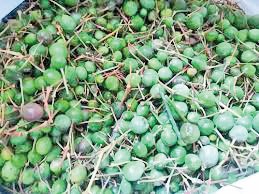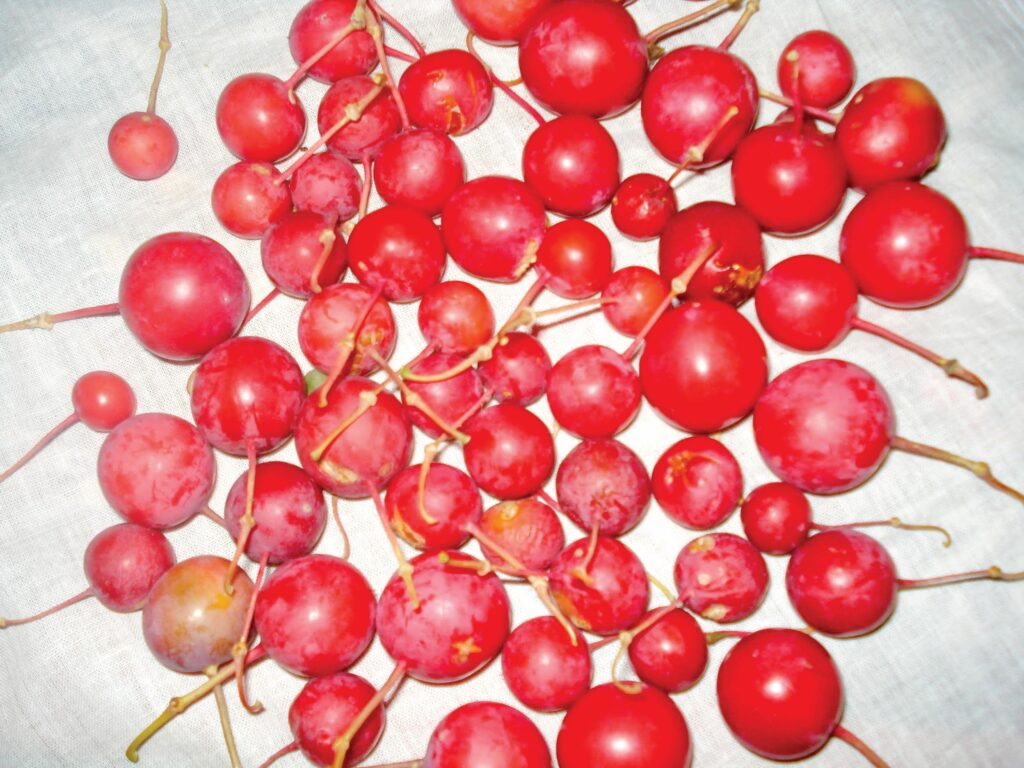
A desert state like Rahjasthan, where survival often seems like a miracle, grows a humble yet remarkable fruit known as the ker berry. This small, round fruit, no bigger than a marble, is nature’s resilience and the resourcefulness of Rajasthan’s people.
Special Features
What makes the ker berry special is its ability to thrive in harsh desert conditions where few other plants can survive. It grows on thorny shrubs that dot the sandy expanses of western Rajasthan, particularly in the Thar Desert region. These shrubs, with their deep root systems, can tap into underground water sources, allowing them to flourish even in the driest times.
Botanical Background
The ker berry, known scientifically as Capparis decidua, is a wild fruit that has been part of Rajasthan’s ecosystem for centuries. It’s not cultivated in the traditional sense but rather harvested from naturally growing shrubs. This makes it a truly local and sustainable food source, deeply connected to the region’s ecology.
Unique Flavor Profile
One of the most striking features of the ker berry is its taste. Unlike many fruits that are sweet or mildly tart, the ker has a strong, pungent flavor that’s often described as bitter or astringent. This unique taste might be off-putting at first, but it’s highly prized in Rajasthani cuisine. The berry’s intense flavor adds depth and complexity to many traditional dishes.

Climate and Growth Conditions
The climate of Rajasthan plays a crucial role in shaping the ker berry’s characteristics. The extreme heat and lack of rainfall create stress conditions that actually enhance the fruit’s flavor and nutritional content. It’s a perfect example of how challenging environments can produce extraordinary results in nature.

Harvesting Process
Harvesting ker berries is no easy task. The shrubs are covered in sharp thorns, making the collection process labor-intensive and requiring skill and patience. Local communities, especially women, are often involved in gathering these berries. The harvest season typically runs from March to April, providing a valuable source of income for many rural families.
Versatility in Use
What’s fascinating about the ker berry is its versatility. While it can be eaten fresh, it’s more commonly used in dried form. The berries are sun-dried, a process that concentrates their flavor and allows them to be stored for long periods. This made them an invaluable food source in the past when fresh produce was scarce in the desert regions.
Culinary Significance
In Rajasthani cuisine, ker berries are a staple ingredient. They’re used in various dishes, from pickles and chutneys to curries and stir-fries. One popular dish is ‘ker sangri’, where the berries are cooked with another desert bean to create a flavorful and nutritious meal. The use of ker in cooking is not just about taste; it’s a reflection of the resourcefulness of desert dwellers who learned to make the most of what nature provided.
Nutritional Value
The nutritional profile of ker berries is impressive, especially considering the harsh environment they grow in. They’re rich in proteins, fiber, and minerals like calcium and phosphorus. This makes them an important dietary supplement in regions where other fresh fruits and vegetables might be scarce.
Medicinal Uses
Interestingly, the ker plant isn’t just valued for its fruit. Various parts of the plant have been used in traditional medicine for centuries. The bark, roots, and leaves are believed to have medicinal properties, used to treat ailments ranging from joint pain to digestive issues. This holistic use of the plant showcases the deep knowledge and connection that local communities have with their environment.

Research and Potential
In recent years, there’s been growing interest in the ker berry beyond Rajasthan. Researchers are studying its potential as a drought-resistant crop that could be cultivated in other arid regions around the world. Its ability to grow with minimal water and resist pests naturally makes it an attractive option for sustainable agriculture in challenging environments.
Ecological Importance
The ker berry also plays a role in the local ecosystem. The shrubs provide shelter and food for various desert animals and birds. Their presence helps prevent soil erosion in the sandy terrain, making them an important part of desert conservation efforts.
Conservation Challenges
One of the challenges facing ker berry conservation is the changing landscape of Rajasthan. As more land is developed or converted for agriculture, the natural habitats of ker shrubs are sometimes threatened. This has led to efforts by local communities and environmental groups to protect these plants and promote sustainable harvesting practices.
Cultural Significance
The cultural significance of ker berries in Rajasthan goes beyond their use in food. They’re often mentioned in local folklore and songs, symbolizing resilience and the ability to thrive in tough conditions. In many ways, the ker berry embodies the spirit of Rajasthan – tough, resourceful, and uniquely adapted to its environment.
Modern Appreciation
As awareness of traditional foods grows, ker berries are finding new appreciation. Some innovative chefs are incorporating them into modern cuisine, creating fusion dishes that bring this ancient fruit to new audiences. This not only helps preserve traditional knowledge but also creates new economic opportunities for local communities.
Future Prospects
Looking to the future, there’s potential for developing value-added products from ker berries. Some entrepreneurs are exploring the creation of ker-based health supplements or natural preservatives, leveraging the fruit’s unique properties. These initiatives could provide new income streams for rural communities while promoting sustainable use of natural resources. Ker berry of Rajasthan is much more than just a wild fruit. It’s a crucial part of local cuisine and culture, and potentially a model for sustainable agriculture in arid regions. From its distinctive taste to its ecological importance, the ker berry continues to play a vital role in the life and landscape of Rajasthan, connecting people to their environment in a deep and meaningful way.














